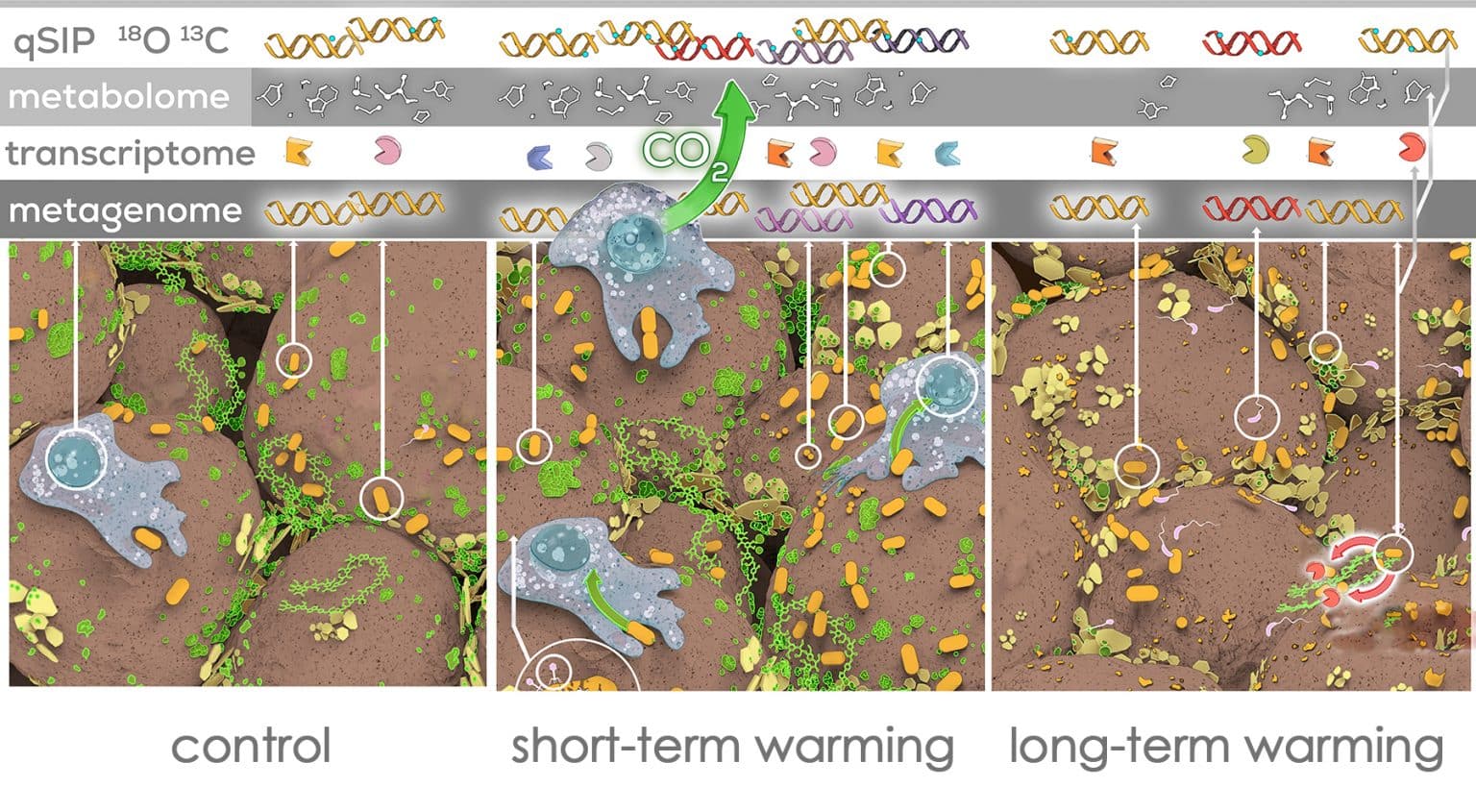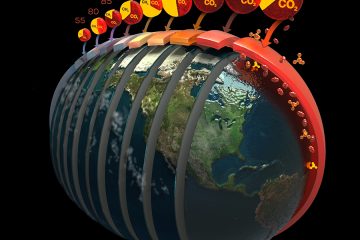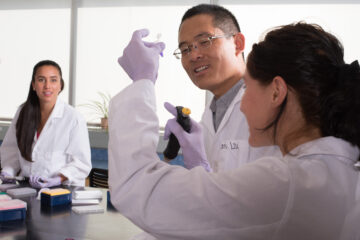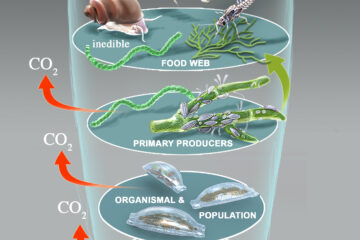Does a warmer future favor microbial friend or foe? Ecoss researchers win $3.4M to study interactions in changing soil

In 2002, the Odyssey probe discovered evidence of past ice on Mars. The U.S. Congress authorized the Iraq War resolution. The Anaheim Angels won the World Series. And in a meadow 15 miles north of Flagstaff, scientists began to monitor and move small plots of soil along a mountain gradient for clues about the complex ways microbes interact as the climate warms.
Now, two decades later, a team of scientists at Northern Arizona University, Lawrence Livermore National Laboratory, Pacific Northwest National Laboratory and West Virginia University have received a new $3.4 million award from the U.S. Department of Energy to conduct a deeper dive into what these buckets of soil have to say about the future. Mapping and better understanding the interplay of soil microbes and how they control nutrients like carbon and nitrogen will help researchers predict and potentially manage soil microbial communities to keep more carbon out of the air and in the soil—a critical piece of the climate puzzle.
The experiment, located along an elevation gradient in the San Francisco Peaks in northern Arizona, is arrayed across four life zones found in temperate climates: mixed conifer forest at the highest elevation, then ponderosa pine forest, pinyon-juniper woodland and desert grassland. By moving the intact community of plants and soil microbes in a carefully preserved pail of soil down the mountain to a new home in the next life zone, scientists can simulate climate warming and drying and compare what happens to soil communities left at higher elevations.
This low-tech design has been one key to the success of the experiment, said Bruce Hungate, Regents’ professor of biology, director of the Center for Ecosystem Science and Society (Ecoss) and designer of the initial experiment in 2002. Compared to other warming experiments that rely on manipulating temperatures through mechanical means, Hungate said part of the elegance was the simplicity: “You could just pick up an ecosystem and move it downslope.” This meant that the treatment was sustainable to maintain over a long period of time, allowing Hungate’s team to accrue longitudinal insights into what was happening belowground.
And such long-term data are vital to answering one of the big questions that has guided Hungate’s research since coming to NAU. “Will different ecosystems respond to change in qualitatively similar ways,” he said, “or will we have to tell just-so stories about every ecosystem we care about to learn what is going to happen to it as the climate changes?”
The new project builds on what Hungate and collaborators have learned from 15 years of warming, and the signals are complex, he said. Significant amounts of carbon were lost to the atmosphere in most ecosystems. In the pinyon-juniper plots, some carbon was gained. As nutrients grew scarcer over time, the team saw dynamics familiar from aboveground food webs: diversity fell, microbial interactions became more antagonistic and a few predators became more relevant in what happened to nutrients. They wondered: what if these microbial relationships hold keys to the fate of soil nutrients in a warmer world?
Ember Morrissey, assistant professor of environmental microbiology at West Virginia University and a lead investigator on the new award, said this project could expand a frontier of soil microbiology. “Soil contains a wealth of microbial species that interact with each other. And while we understand a few of these interactions, most of them remain entirely undescribed by science.”
“My team is asking how climate change influences cooperative and competitive interactions during decomposition,” Morrissey said. “By studying simple and complex root carbon inputs, we hope to see how mutualism and competition influence the decomposition and stabilization of these important carbon inputs to soil.”
“We are taking a holistic approach in which we consider all microbial groups, from bacteria and archaea to fungi and protists, and associations among them, such as prey-predator interactions,” said Javier Ceja-Navarro, an associate professor of biology at Ecoss. “This work has the potential to improve current and future ecological models that aim to understand the influence of microbes on biogeochemical cycling and climate change.”
The established warming experiment and the development of high-precision sequencing tools in the two decades since it began are adding up to a unique opportunity to ask these new questions of familiar soil. Using ‘omics tools and a state-of-the-art technique called quantitative Stable Isotope Probing, or qSIP, the team of researchers can assemble not just a picture of who lives in the soil at a given point, but a kind of molecular time-lapse that reveals who is growing, who is interacting and who disappears over time.
The award was made as part of a $178 million investment by the Department of Energy into bioenergy and microbiome and climate-related research. “These projects will continue to advance the boundaries of biotechnology and support the emergence of a thriving U.S. bioeconomy that creates good-paying jobs and helps us meet our climate goals,” said U.S. Secretary of Energy Jennifer Granholm.
Hungate, Morrissey and Ceja-Navarro are joined by NAU investigators professor Egbert Schwartz, senior research scientist Ben Koch, Regents’ professor Michelle Mack, assistant professor Toby Hocking, Jennifer Pett-Ridge and Steve Blazewicz at Lawrence Livermore National Laboratory and Kirsten Hofmockel and Bram Stone at Pacific Northwest National Laboratory.


